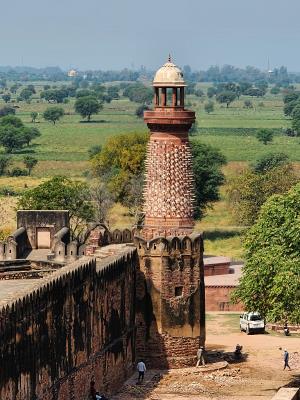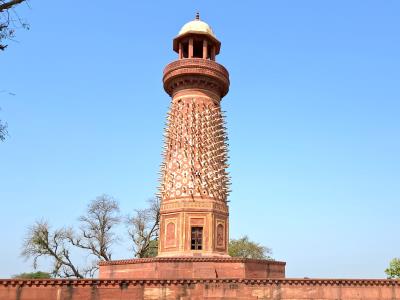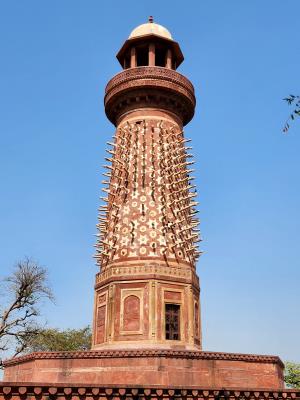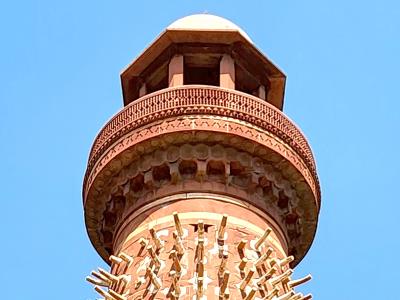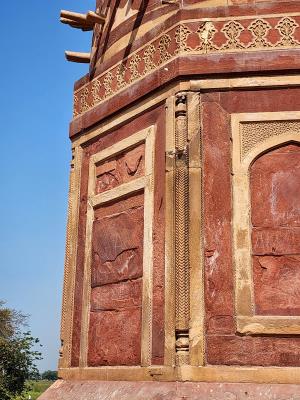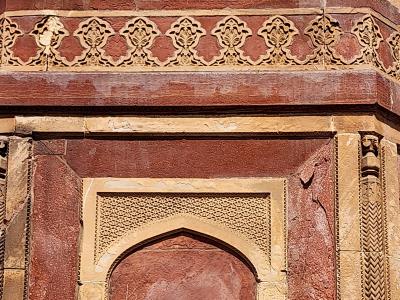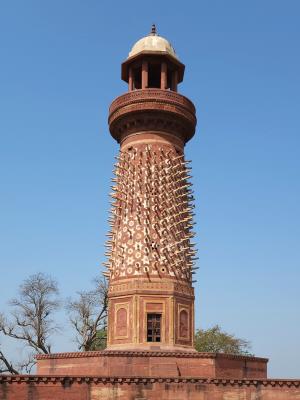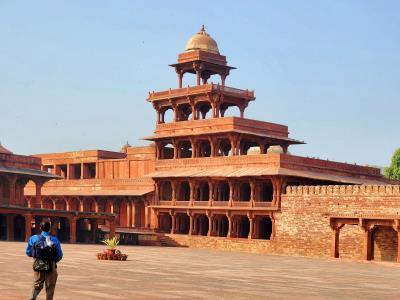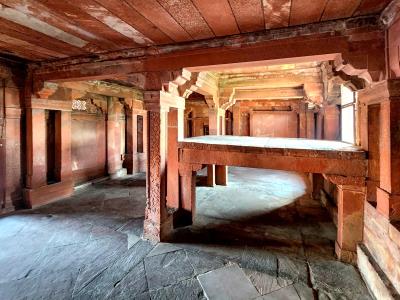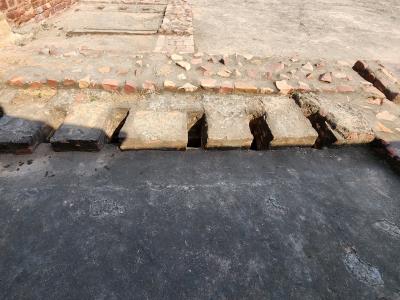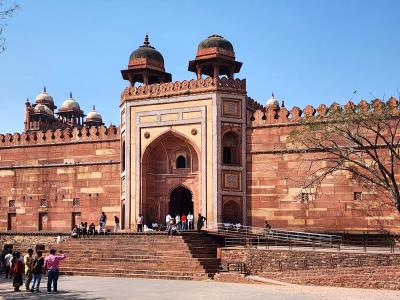Day 8 3/2/2023
India - Agra
Frank's Trip
CLICK on any image to enlarge - use mouse cursor to move enlargement it if doesn't fit area
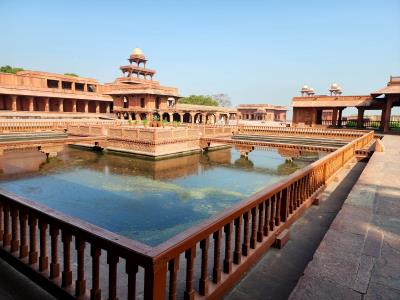
Fatehpur Sikri...
Fatehpur Sikri was a day from from Agra. The trip wasn't so long, but the time and effort of seeing everything was exhausting. And "everything" was only a single place - a very big place, though.
The next day was the trip back to Delhi. If I thought the train ride from Delhi was not so good, the ride back was much worse. Part of that was because I have simply overdone and worn myself down too much. My ambition to see things is outweighing my ability... or, as used to be said "my alligator mouth bit off more than my jaybird ass could chew".
 Fatehpur Sikri
Fatehpur Sikri
The Emperor Akbar visited the Sikri village to seek guidance from a saint in the 1500s. There was no heir to his throne. After the consultation he was blessed with the sons he needed to carry forth his legacy. In celebration he built Fatehpur Sikri - which translates to City of Victory.
This World Heritage site is a massive complex of palaces and associated buildings forming both a defensive fort and a place to administer government. Unfortunately, a lack of water resources doomed the town not so very long after it was built.
Diwan Khana-i-Aam
The idea of separate meeting rooms for commoners and royal guests is a theme common in many Mughal cities and forts. Diwan Khana-i-Am or simply Diwan-i-Am is where Emperor Akbar had meetings with his subjects on topics of justice and other issues.
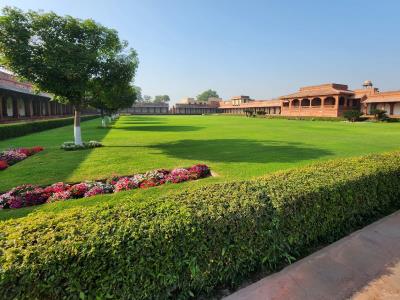
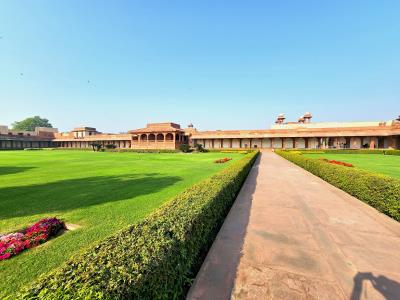
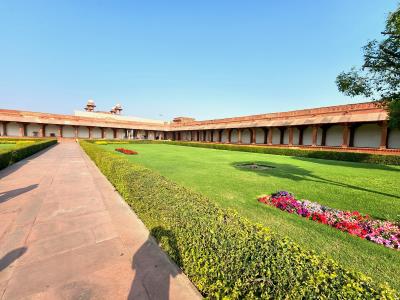
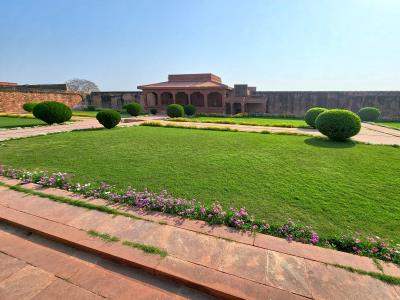
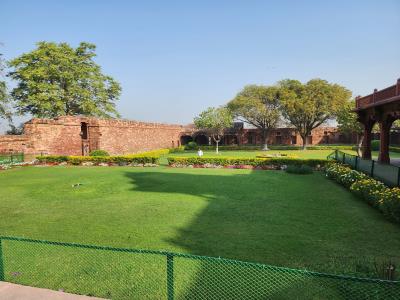
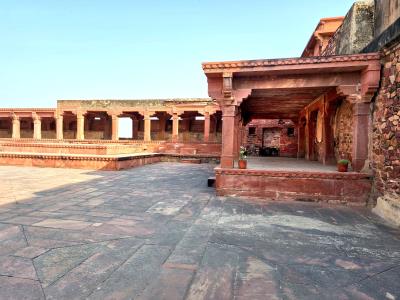
The Pachisi Court
The Fatehpur Sikri – Pachisi Court was used to play a game called Pachisi. The Mughal emperors were well known for their extravagant lifestyles and they went to great lengths to enhance their entertainment. Some of the emperors came up with unique ideas to entertain themselves and the members of the royal family. Legend claims that Akbar played Pachisi on this human-scaled board with slave girls dressed in different colors as living pawns.
The photos below show the nearest and best marked 4 parts of the court leading to the center (home / winner).
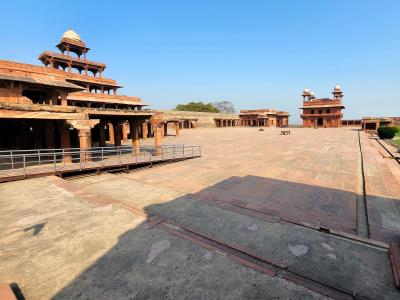
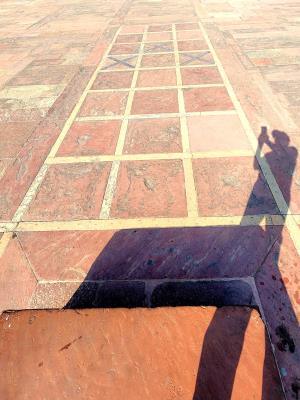
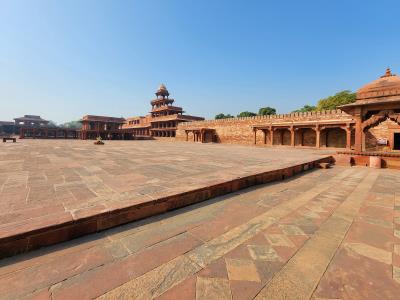
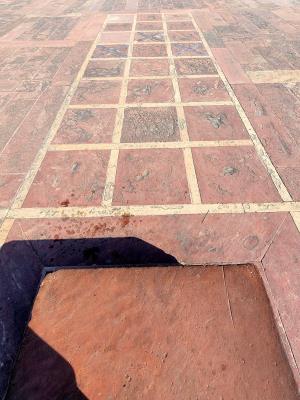
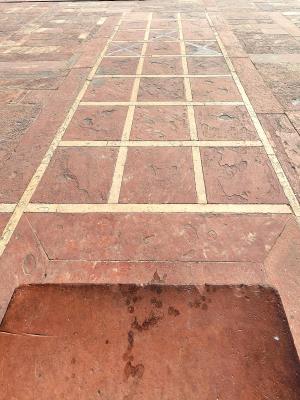
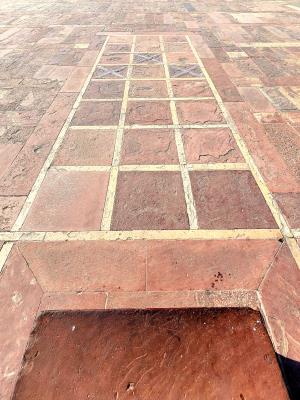
Jodhbai's Palace
Jodha Bai Mahal also known as Jodh Bai Mahal is the largest and most prominent palace in Fatehpur Sikri commissioned by Emperor Akbar for his favorite wife, Mariam-uz-Zamani, commonly known as 'Jodha bai'. It is a masterpiece of the fusion of Hindu and Persian architecture made with red sandstone.
Born as a Rajput princess, Mariam-uz-Zamani was married to Akbar in the year 1562 as a result of a political alliance between Akbar and her father, Raja Bharmal. She gradually became his favorite wife and was the first wife of Akbar to honor the royal household with an heir. In the year 1569, she gave birth to her third and first surviving child of Akbar, Prince Salim. Akbar shifted his capital from Agra to Fatehpur Sikri in acknowledgement of his faith in the efficacy of the holy man's prayer, Sheikh Salim Chisti, whose blessings he sought for the birth of an heir to his empire.
It also has a Hindu temple and a tulsi math (serene open area with an idol of a Hindu god) used by his Hindu wife for worship.
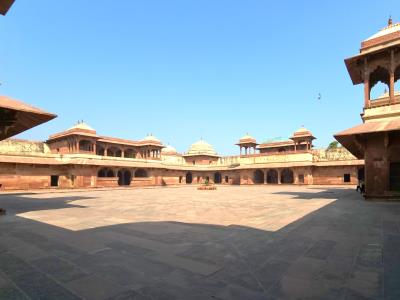
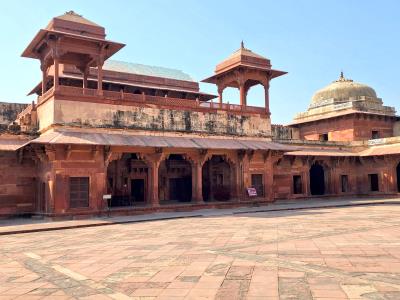
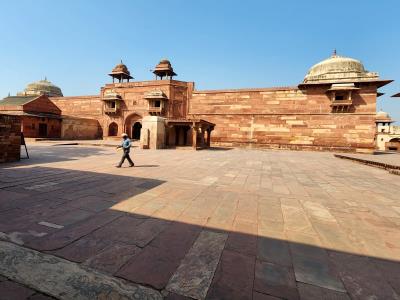
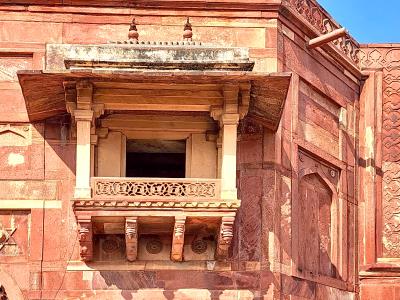
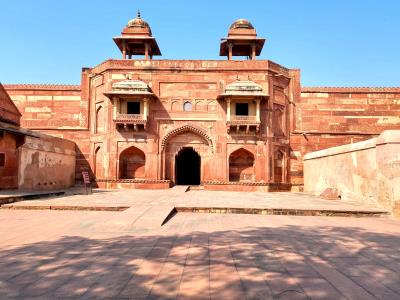
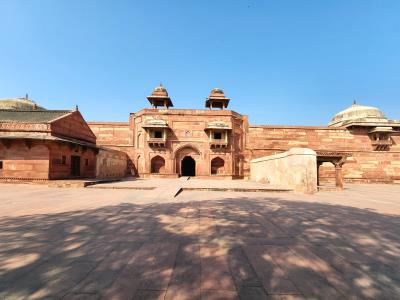
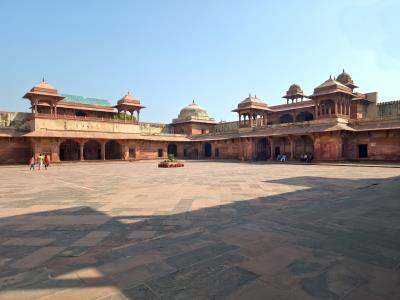
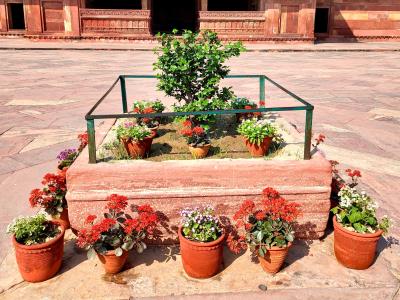
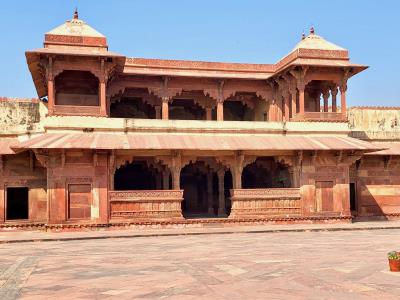
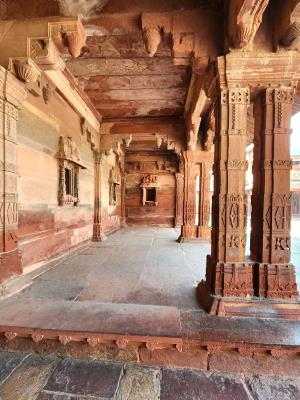
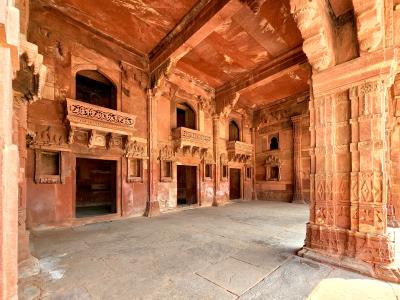
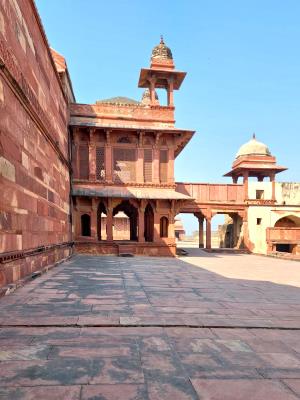
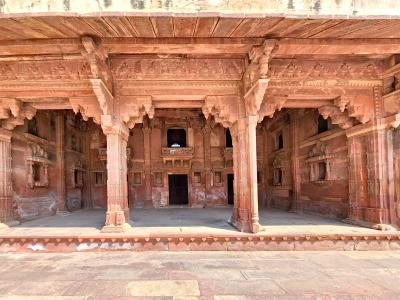
In the center of the photo on the left you can see a small point of light coming in from outside. This is shown better in the closer photo on the right.
This is the light coming in from the ventilation screens to cool the bedroom and the bedroom itself, with its screens, is shown more fully in the picture on the above right.
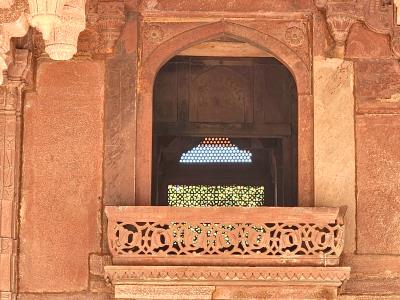
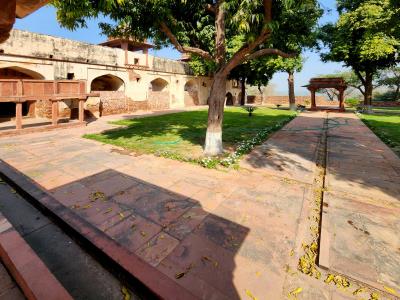
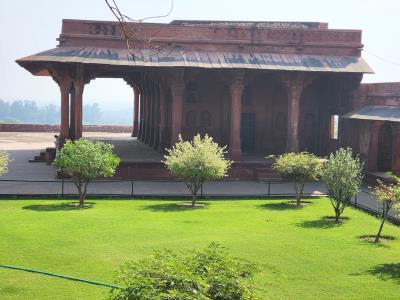
Minar Bazaar
Shopping bazaar for the ladies of the court. Merchants would come in with their goods and the ladies could come to this area to choose what they wanted.
Sunhara Makan
Maryam's House was embellished with paintings. It was the house of emperor Akbar's mother, Hamida Banu Begum, who was holding the title of Mariam Makani.
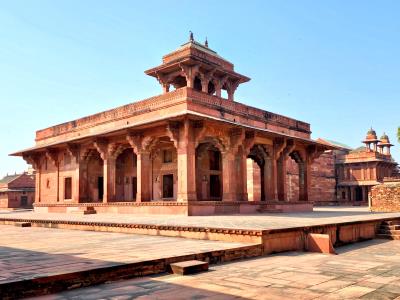
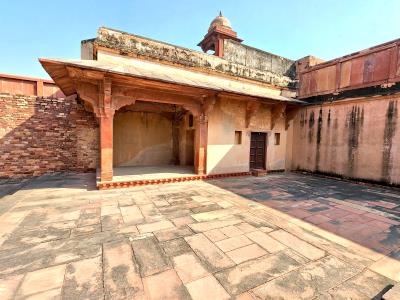
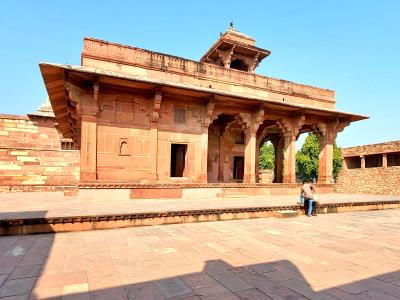
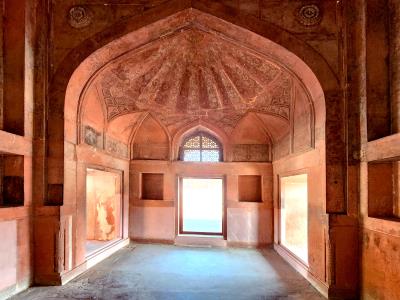
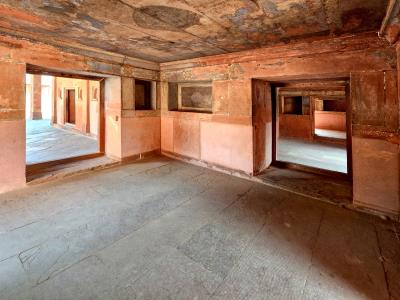
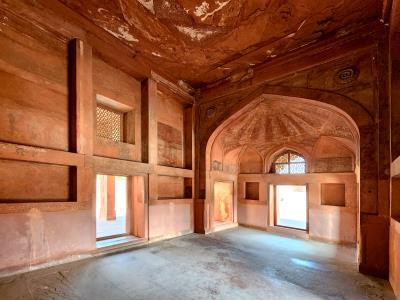
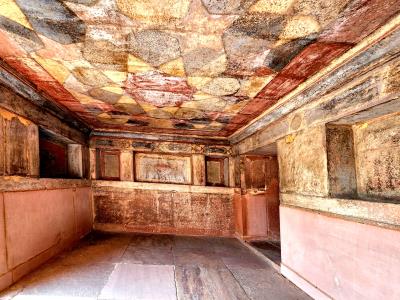
Diwan-i-Khas - Jewel House
It is the most intriguing section of the palace complex.
Diwan-i-Khas (Hall of Private Audience) is variously thought to be a place where the Emperor meets his private guests and dignitaries - And/Or - a place where the Emperor sits in the center surrounded at the 4 corners by his closest advisors - And/Or - had religious discussions among the 4 religions (all of which are represented in the decor) - And/Or - a hall for the weighing ceremony for the Emperor and Princes on Persian New Year Day.
Bridges, which run diagonally from the corners of the gallery, connect to a balcony supported by a Lotus shaped Throne Pillar. This stone column supports a flat dome which is 20 feet high. The main seat of the king was positioned in the middle of the hall attached to the huge pillar. The galleries are the seat for ministers and guests.
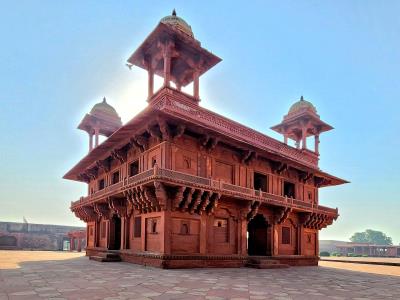
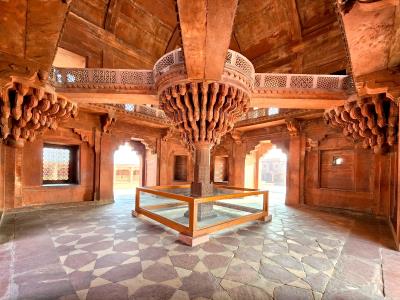
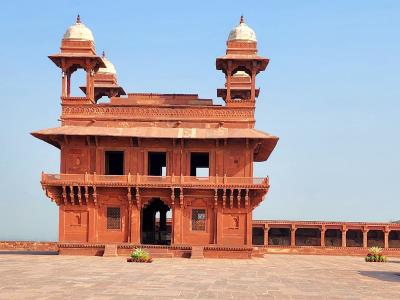
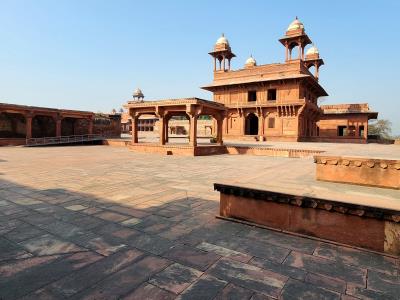
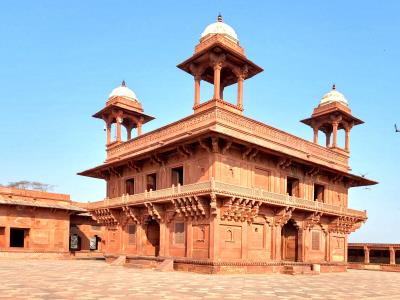
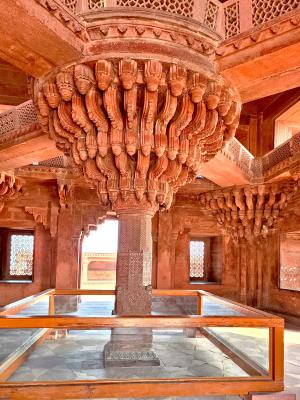
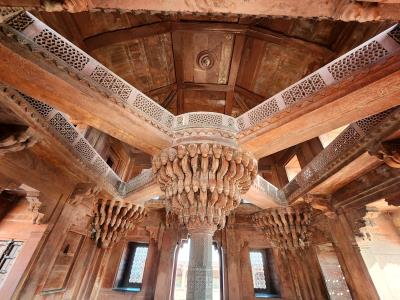
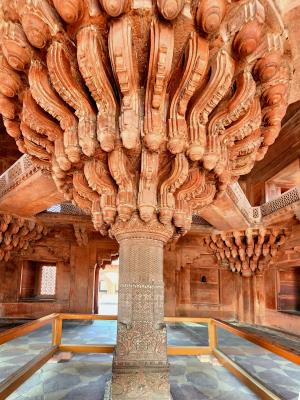
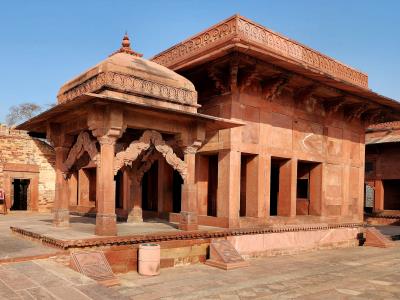
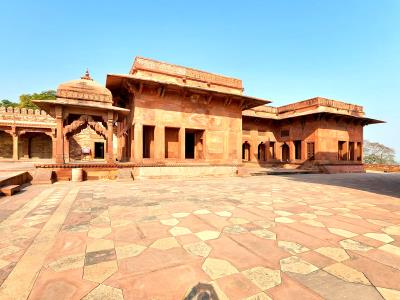
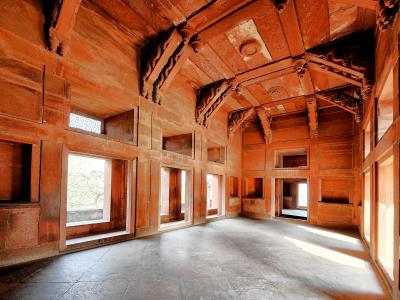
possibly Court Treasurer
Panch Mahal
A five-storied palatial structure, with the tiers gradually diminishing in size, until the final one, which is a single large-domed chhatri. Originally pierced stone screens faced the facade and probably sub-divided the interior as well, suggesting it was built for the ladies of the court. The floors are supported by intricately carved columns on each level, totaling to 176 columns in all.
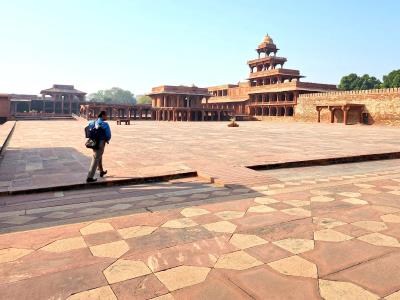
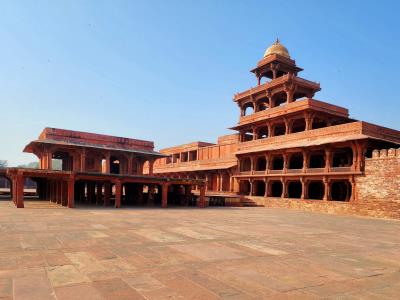
Madrassa and Library
In front of the Panch Mahal was a madrassa and library. The library is the top section (second floor).
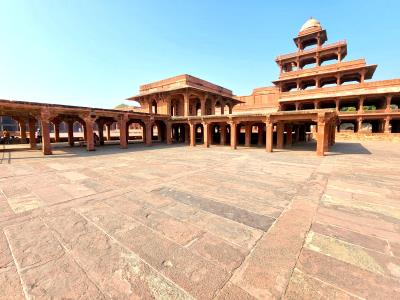
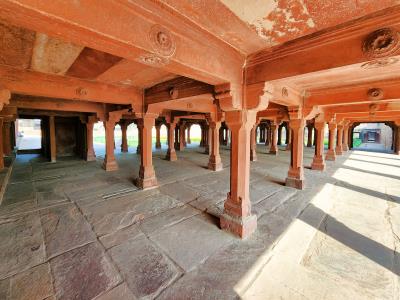
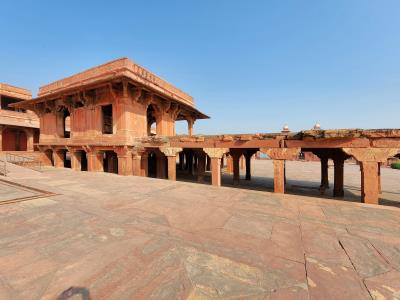
Hujra i-Anup Talno - Turkish Sultana's House
Built in red sand stone, the exterior and interior of the palace are beautifully ornamented with carvings and it has a balcony on each side. It is believed that this building was the home of two Turkish queens of Akbar called Salima Sultan Begum and Ruqayya Begum. It was probably used as a pleasure pavilion by the Turkish queens attached to the pond.
This is a square building, etched in floral and geometric patterns. The main chamber is one among the richly ornamented structures of the harem complex. The structure comprises of richly carved panels, pilasters, columns, friezes and brackets. It is connected to the ground floor of the Khwabgah complex through a verandah and it has a portico in the west. Both the verandah and portico have stone screens with lattice work.
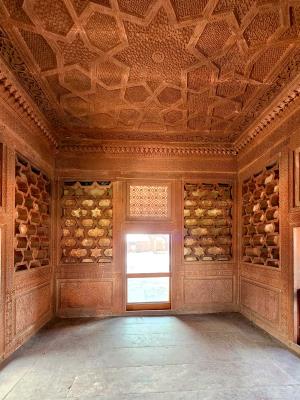
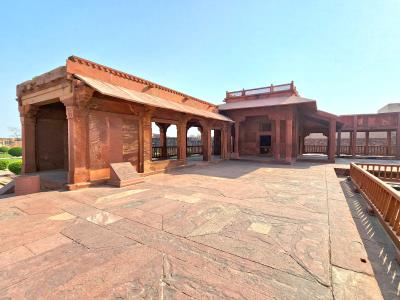
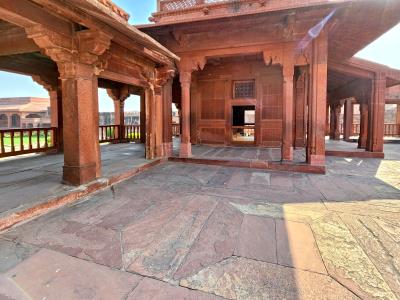
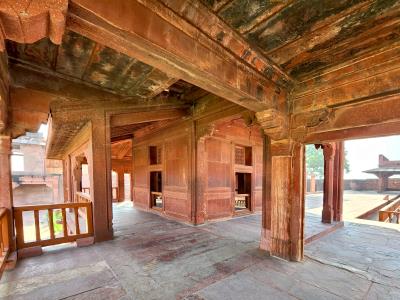
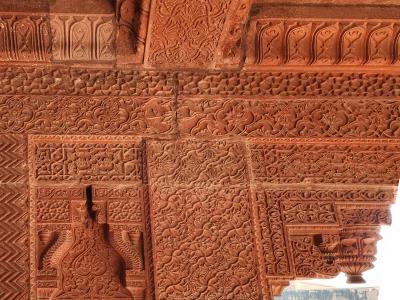
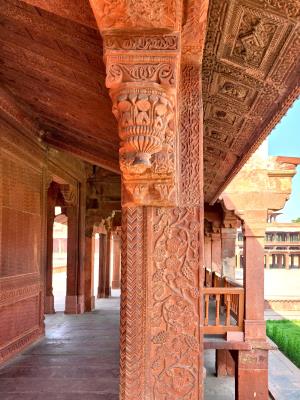
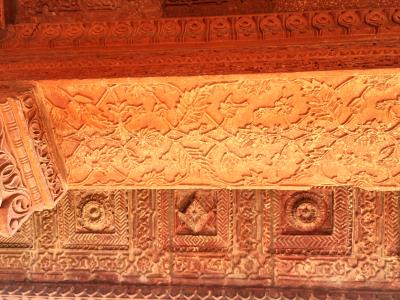
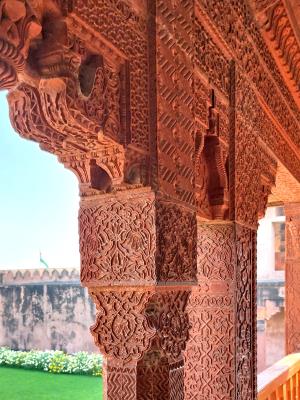
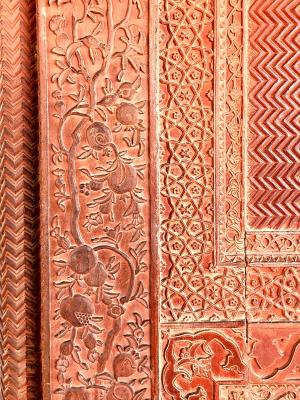
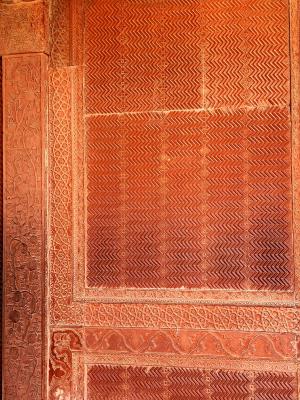
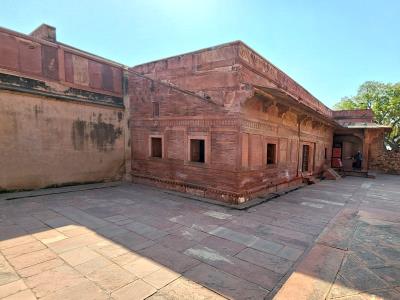
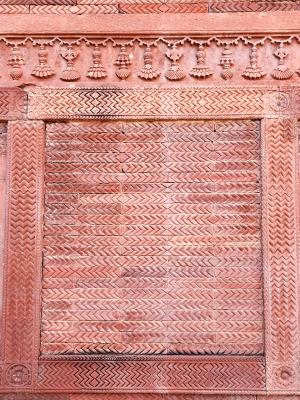
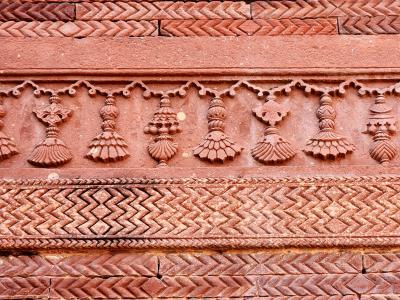
Anup Talao
The "Peerless Pond" is a water tank with four bridges leading to the central platform. It is believed that Tansen (the Elvis of his time and place) sat here and sang some of his most melodious songs.
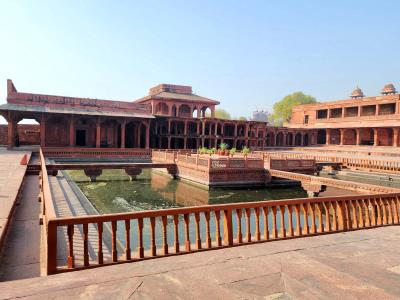
Akbar's Khwabgah - The House of Dreams
Literally, Akbar's bedroom. It has a separate room for the emperor to hold secrete official meetings with his nobles, Kutub khana or a personal library with a number of books and official documents, a small bathroom and the bedroom of Akbar.
The bedroom known as Khilwatkada-i-Khas was surrounded by a pillared verandah with a stone-tiled sloping roof. It was connected to the imperial harem and Panch Mahal via a covered passage. The ground floor chambers are simple but the emperor's personal chamber on the first floor is pompously ornamented using carved flat panels, beautiful murals depicting geometrical and floral patterns and painted designs. The mural paintings on the wall depict scenes from Mughal court, which have faded with time.
This is a real King Size Bed!
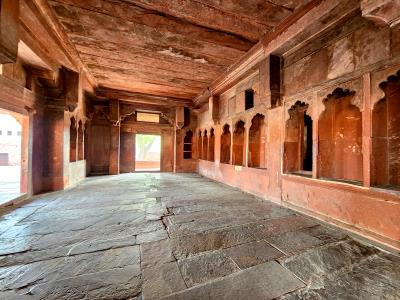
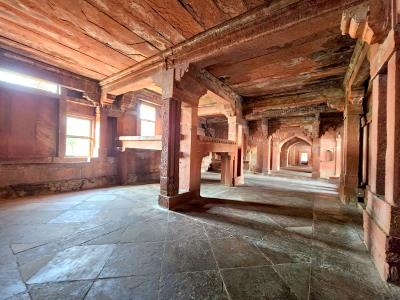
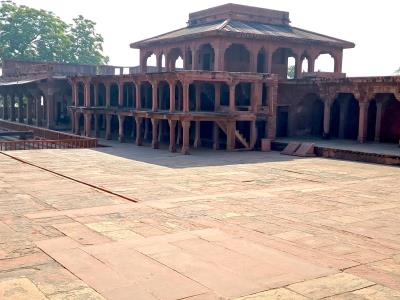
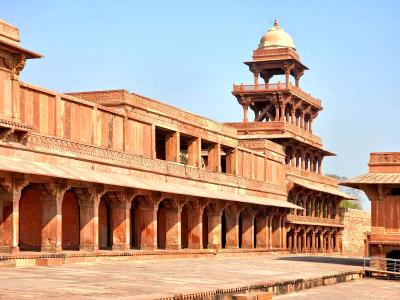
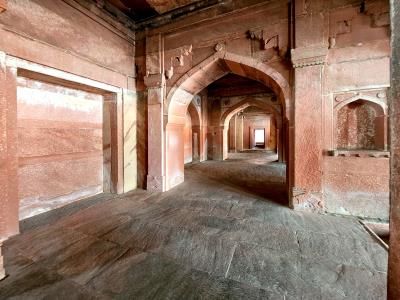
Post Office
Air Mail Department! Carrier pigeons were used for communication and this is the area where they were received and housed.
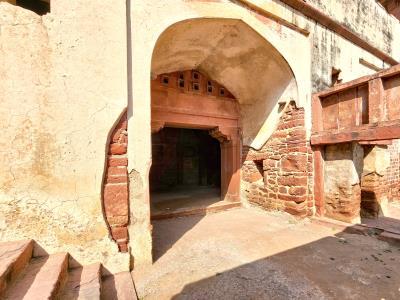
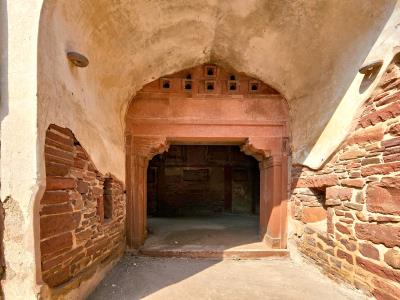
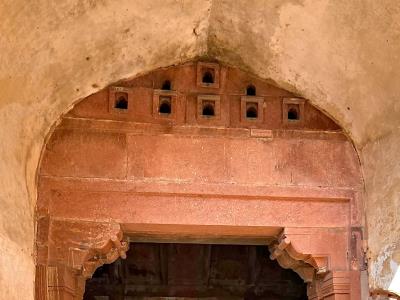
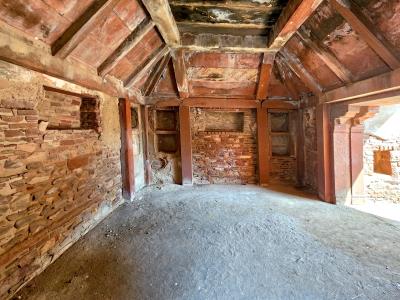
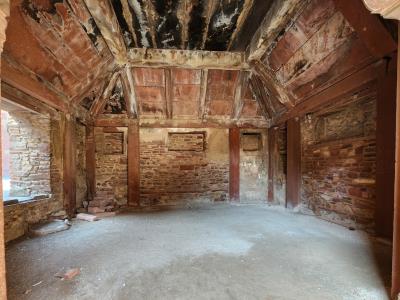
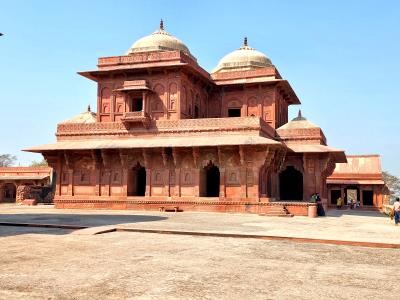
Birbal's House
Birbal's Palace is one of the important monuments in Fatehpur Sikri and is the residence of Raja Birbal, Akbar's Hindu Prime Minister, one of the most trusted persons and was also one of the Navratnas or Nine Jewels in Akbar's court.
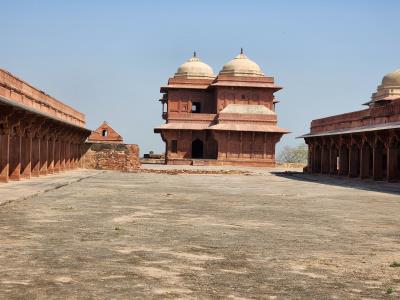
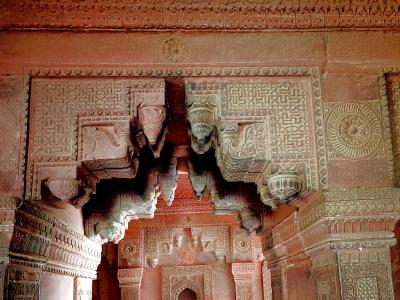
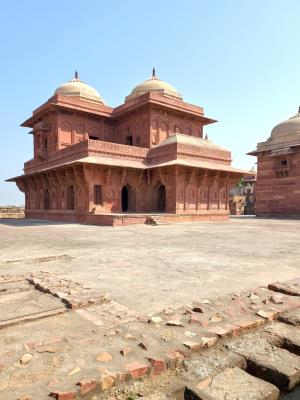
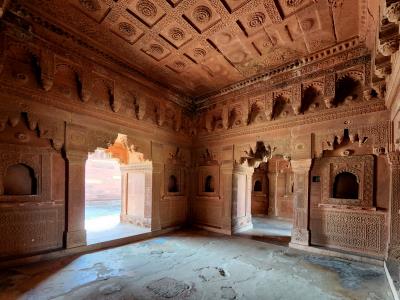
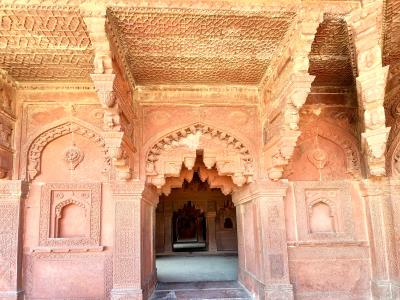
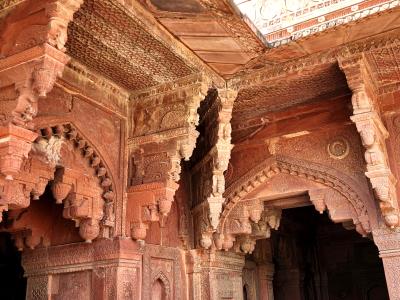
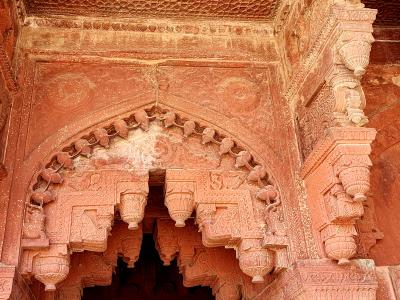
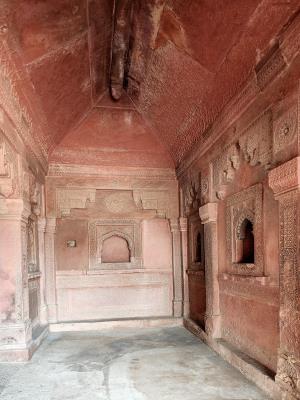
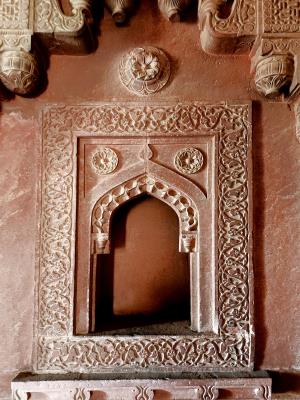
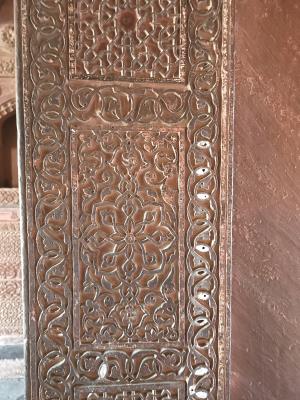
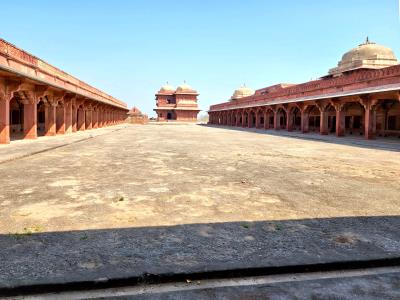
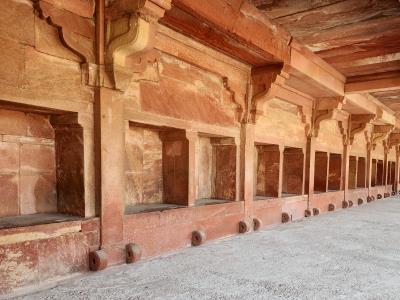
Jama Masjid
Jama Masjid: It is a Jama Mosque meaning the congregational mosque and was perhaps one of the first buildings to be constructed in the complex, as its epigraph gives AH 979 (A.D. 1571–72) as the date of its completion, with a massive entrance to the courtyard, the Buland Darwaza added some five years later. It was built in the manner of Indian mosques, with iwans around a central courtyard. A distinguishing feature is the row of chhatri over the sanctuary. There are three mihrabs in each of the seven bays, while the large central mihrab is covered by a dome, it is decorated with white marble inlay, in geometric patterns.
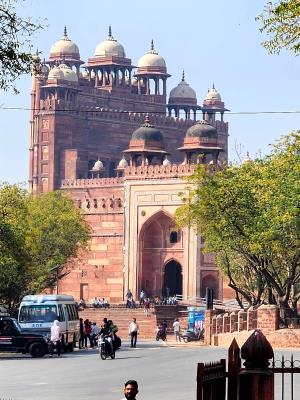
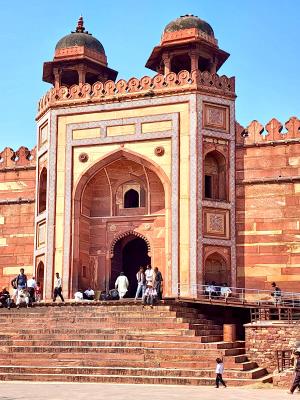
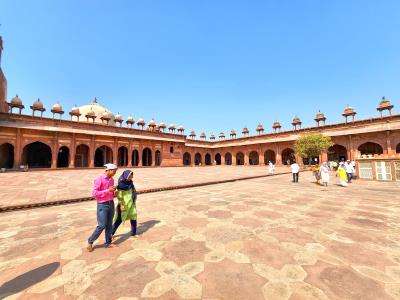
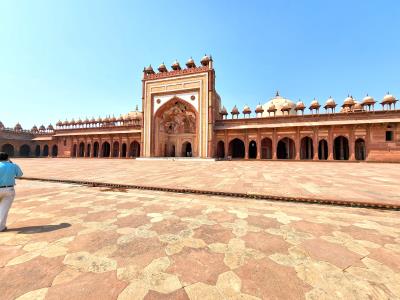
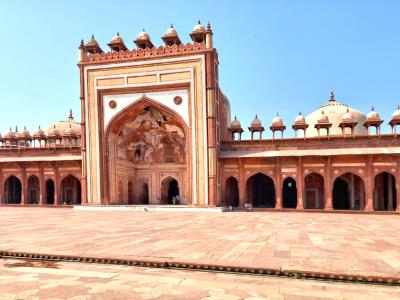
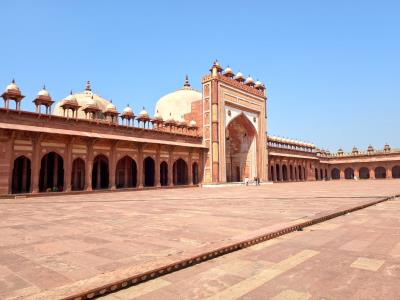
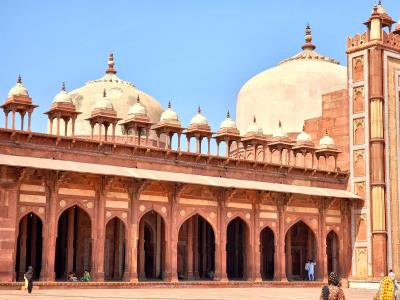
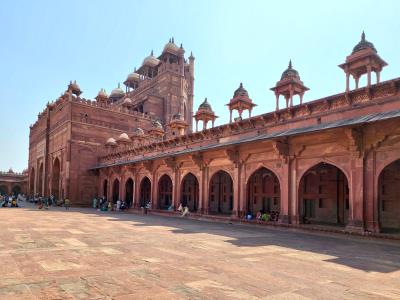
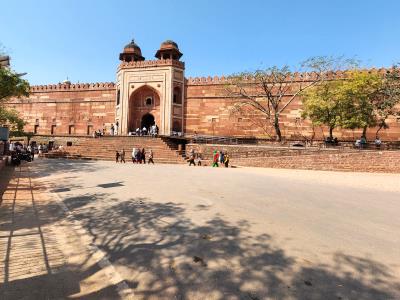
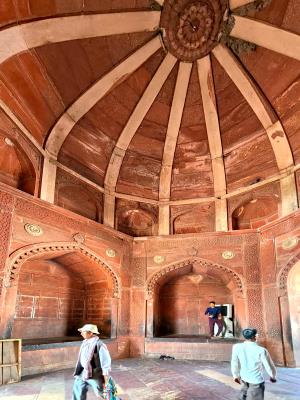
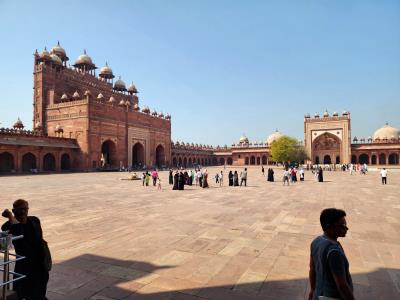
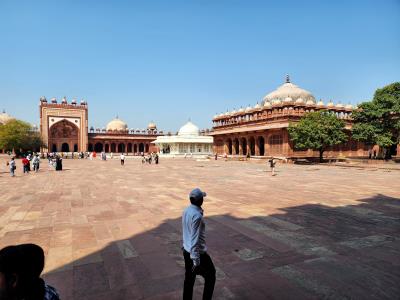
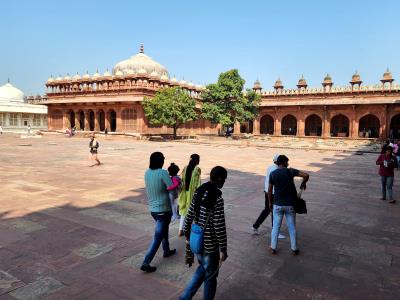
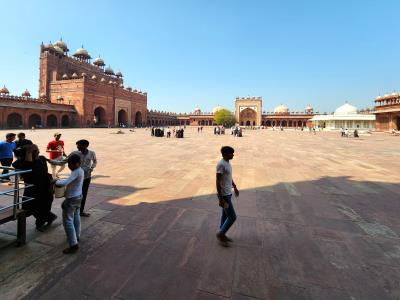
Inside the Jama Masjid Mosque
This mosque is still in use. If one looks a bit closely beyond the surface age, the beauty and artistry are still there after hundreds of years.
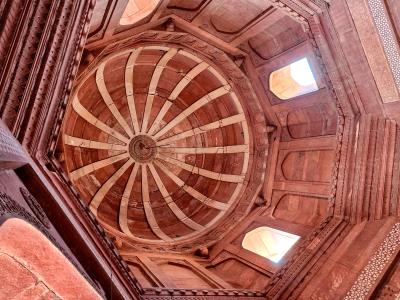
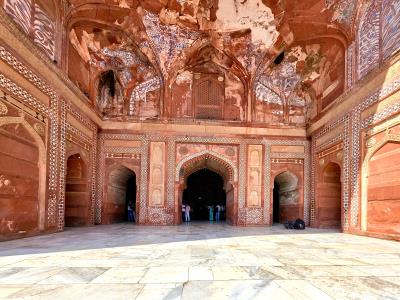
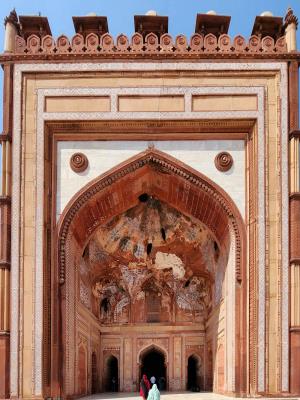
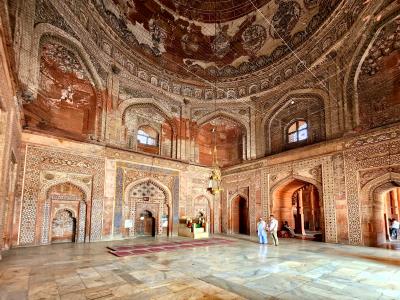
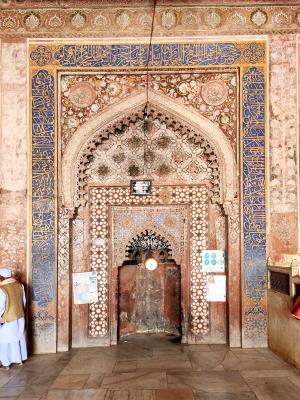
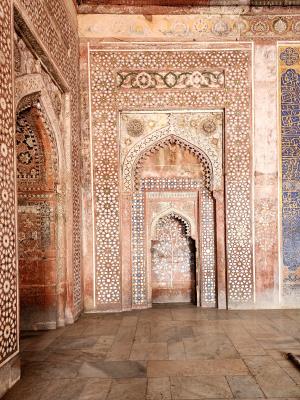
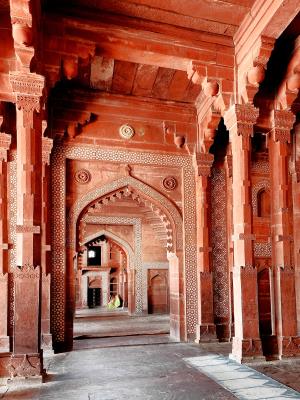
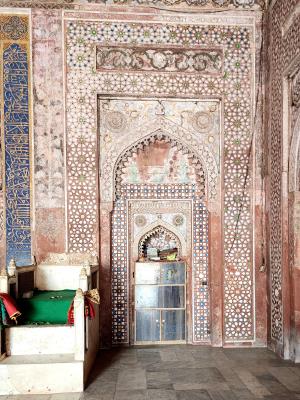
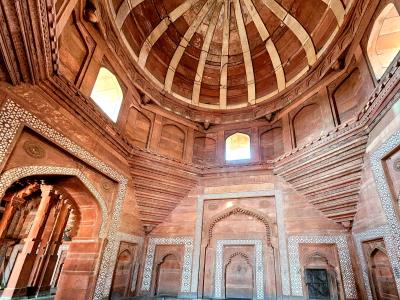
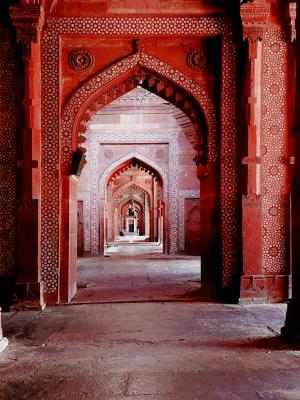
Tomb of Islam Khan I
Son of Shaikh Badruddin Chishti and grandson of Shaikh Salim Chishti, who became a general in the Mughal army in the reign of Jahangir. The tomb is topped by a dome and thirty-six small domed chattris and contains a number of graves, some unnamed, all male descendants of Shaikh Salim Chishti.
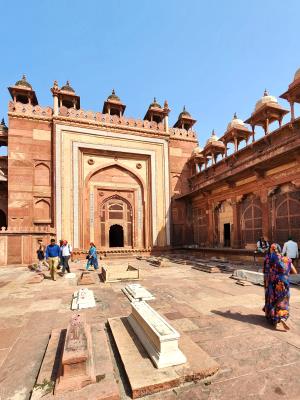
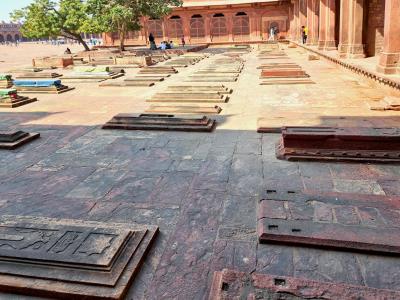
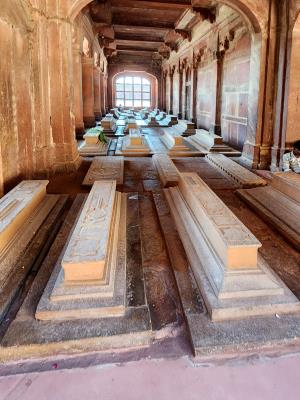
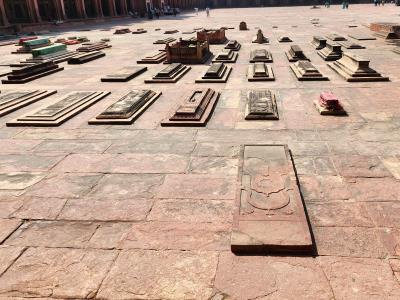
Tomb of Salim Chishti
The single-story structure is built around a central square chamber, within which is the grave of the saint, under an ornate wooden canopy encrusted with mother-of-pearl mosaic.
Emperor Akbar built the tomb of Sufi Saint Salim Chisti in 1580-81, after the saint died in 1572. The saint Salim Chisti lived in a cavern on the ridge at Sikri. The mausoleum was as a mark of his respect for the Sufi saint, who foretold the birth of Akbar's son, who was named Prince Salim after the Sufi Saint and later succeeded Akbar to the throne of the Mughal Empire, as Jahangir.
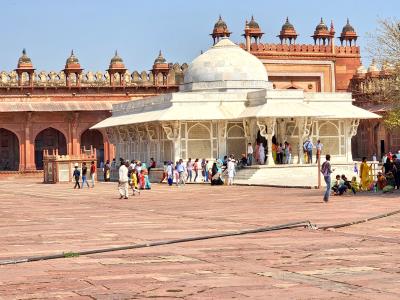
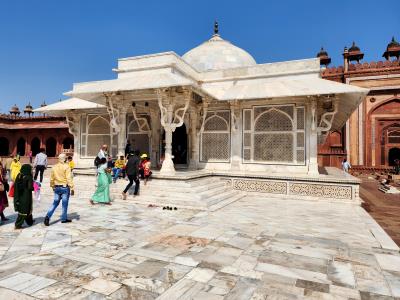
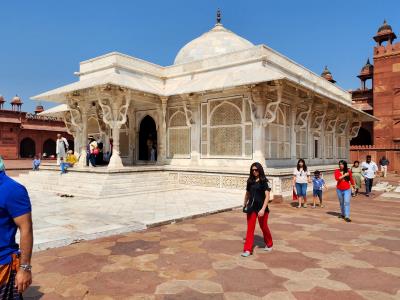
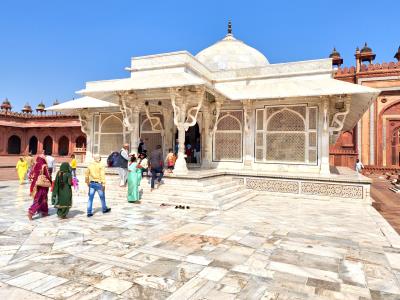
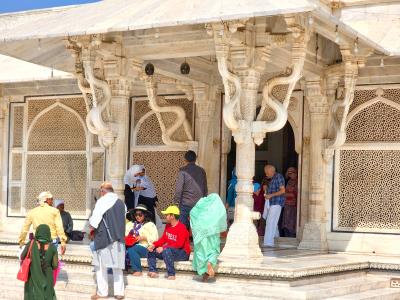
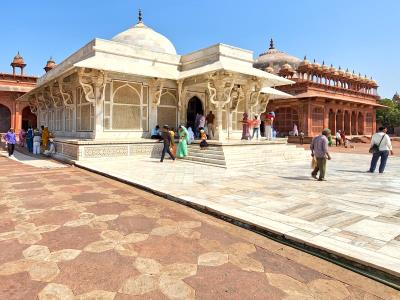
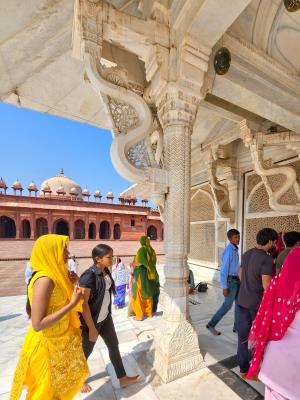
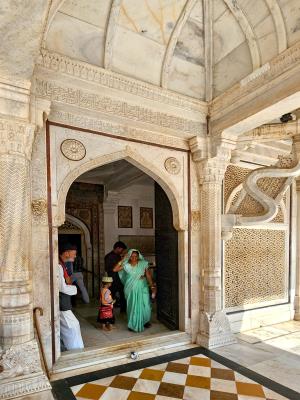
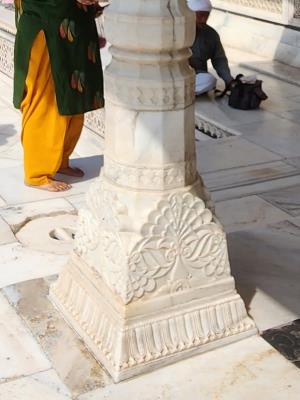
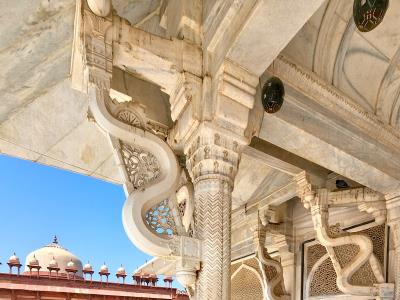
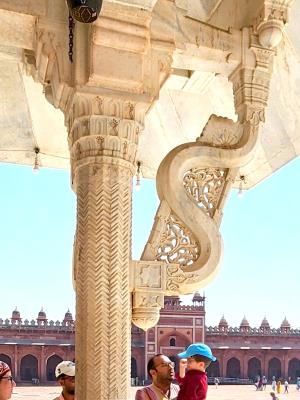
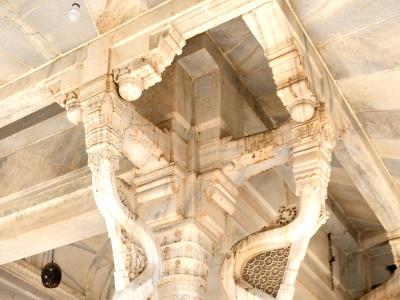
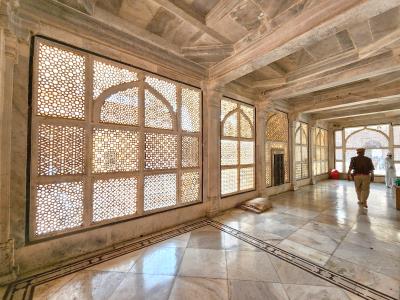
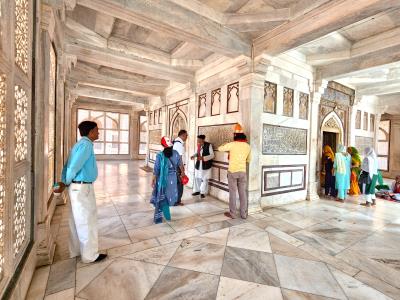
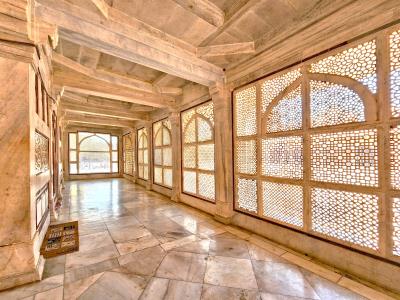
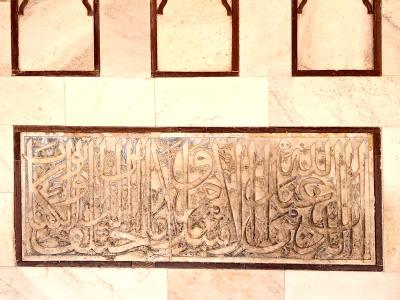
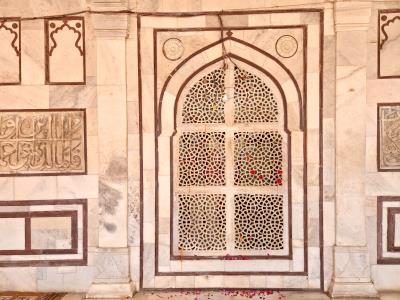
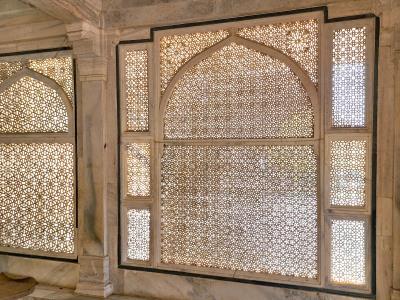
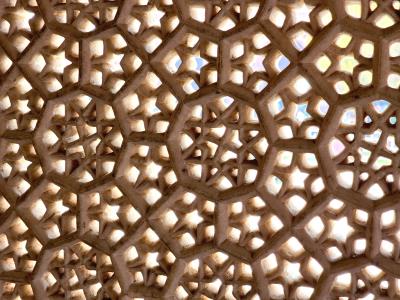
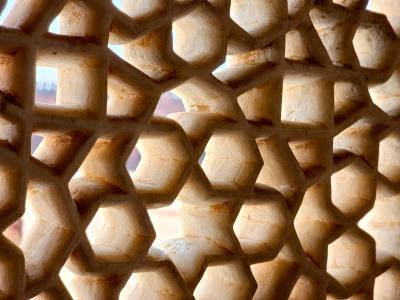
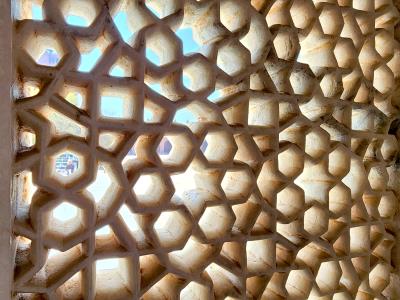
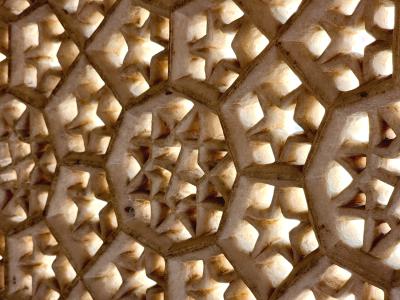
Buland Darwaza - Gate of Magnificence
177 feet high entrance to Jama Masjid. 47 steep steps lead up to the outside of the gate. This is said to be the highest gate in Asia.
The gate was added around five years after the completion of the mosque c. 1576-1577 as a victory arch, to commemorate Akbar's successful Gujarat campaign.
The gate carries inscriptions in the archway:
"Isa, Son of Mariam said: The world is a bridge, pass over it, but build no houses on it. He who hopes for an hour may hope for eternity. The world endures but an hour. Spend it in prayer, for the rest is unseen".
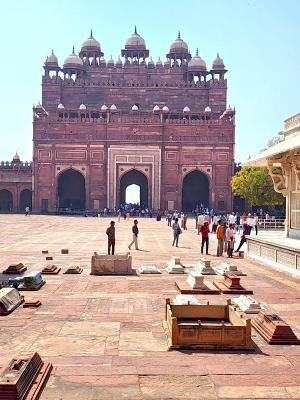
LEFT: Buland Darwaza from the courtyard
RIGHT: Right side of the semi-octagon from the outside
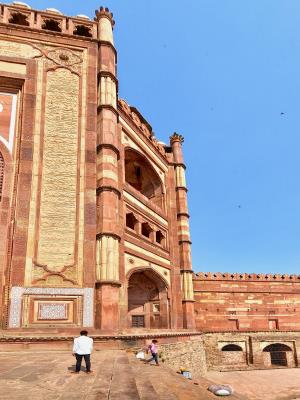
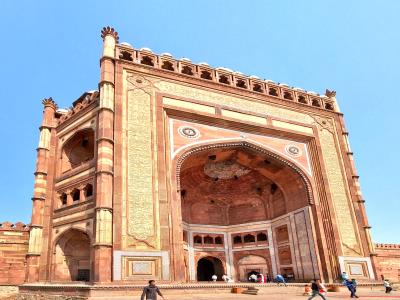
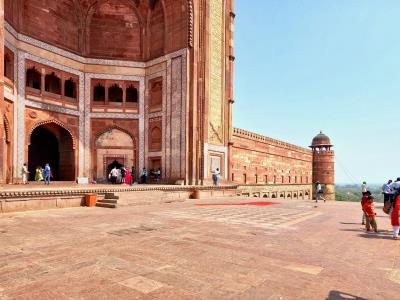
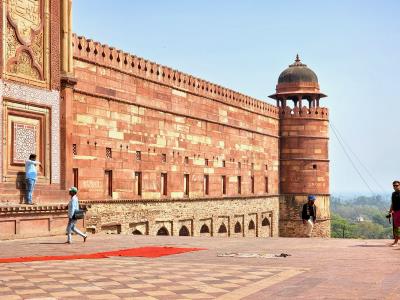
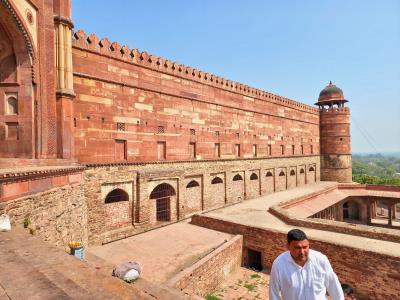
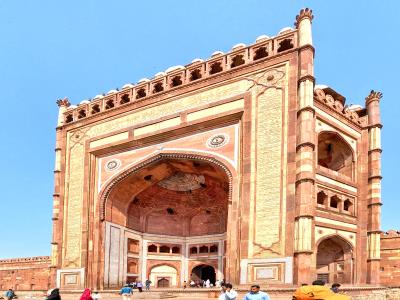
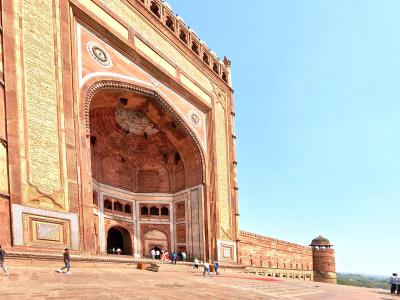
Hathi Pol - The Elephant Gate
The Hathi Pol was probably the imperial entrance to the complex. The gateway is made up of rubble and finished with red sandstone and marble. The gateway is fortified and contains battlements. The main entrance is a plain structure with a height of 17 feet. The name Hathi Pol was kept as it was once adorned with two beautiful stone carved elephants of 12 feet high on either side of the gate. One can see partially survived elephants on the gateway.
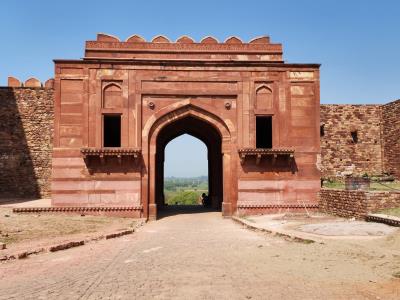
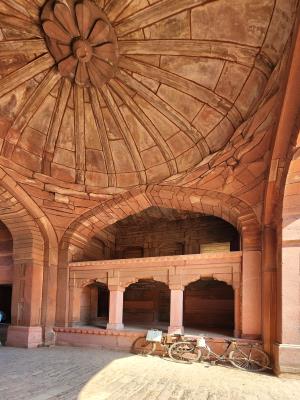
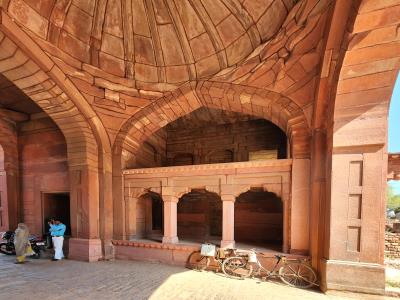
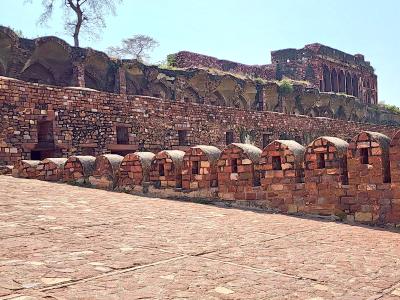
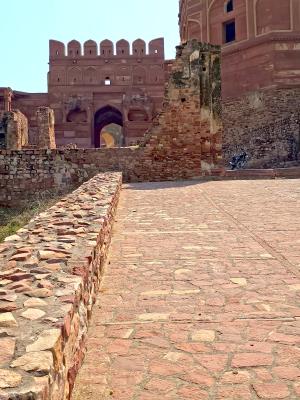
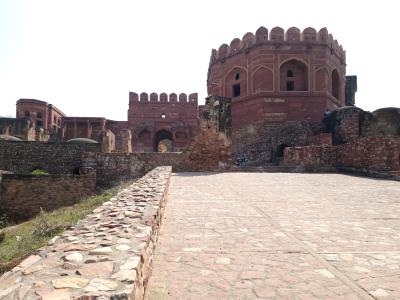
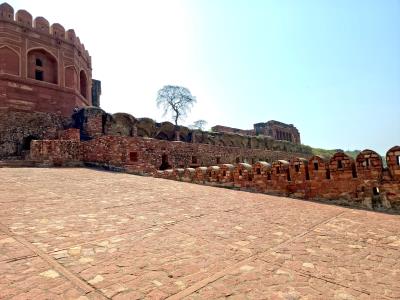
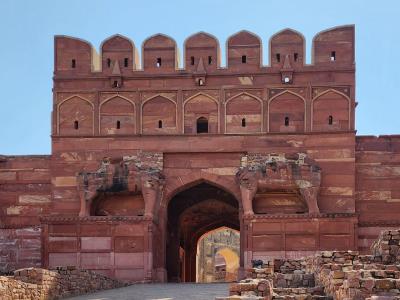
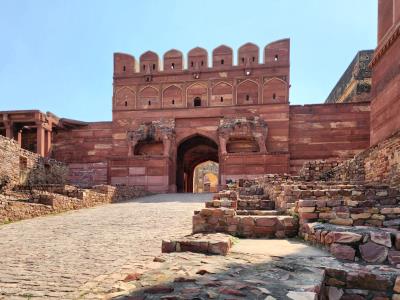
Caravanserai
Just outside the walls of Fatehpur Sikri at the Elephant Gate and toward Hiran Minar are the remains of a rather large caravanserai. A 'Caravanserai" was the Holiday Inn of the day.
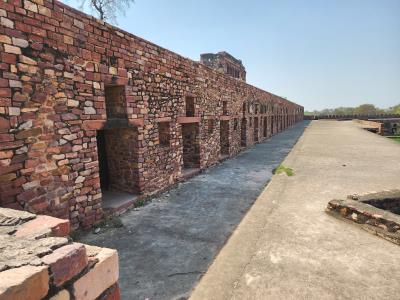
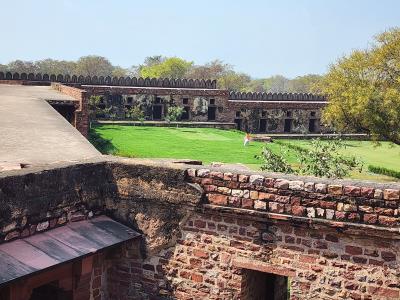
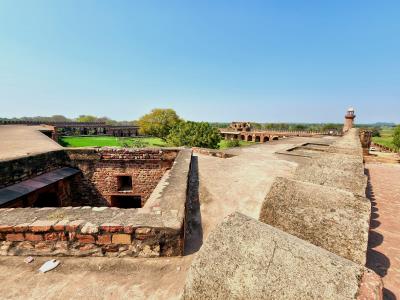
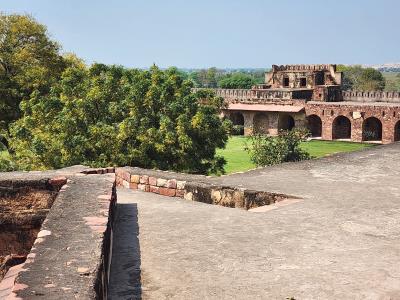
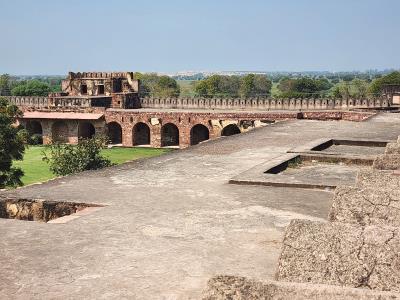
Hiran Minar
The "Elephant Tower" It is believed that Akbar built Hiran Tower in the memory of his favorite elephant, Hiran.
With a height of 70 feet, Hiran Minar is octagonal at the ground level and circular to the rest of the tower. This is built over an octagonal platform, which in turn stands on a square base. This tower is decorated with an alternate row of hexagons and six point stars. Earlier, elephant tusks were placed emerging from the center of each star, which are now replaced with stone tusks.
The picture to the right is taken from a point on the steep downhill road from the elephant gate, past the Caravanserai, to the tower. Part of the wall of the Caravanserai is in front of the lower part of Hiran Minar. The downhill walk isn't bad if one is a bit careful on the ancient road paved with rocks. Going back uphill is a killer - happily, I was able to get my taxi driver to find the road and come to the tower itself and spare me that "death walk".
